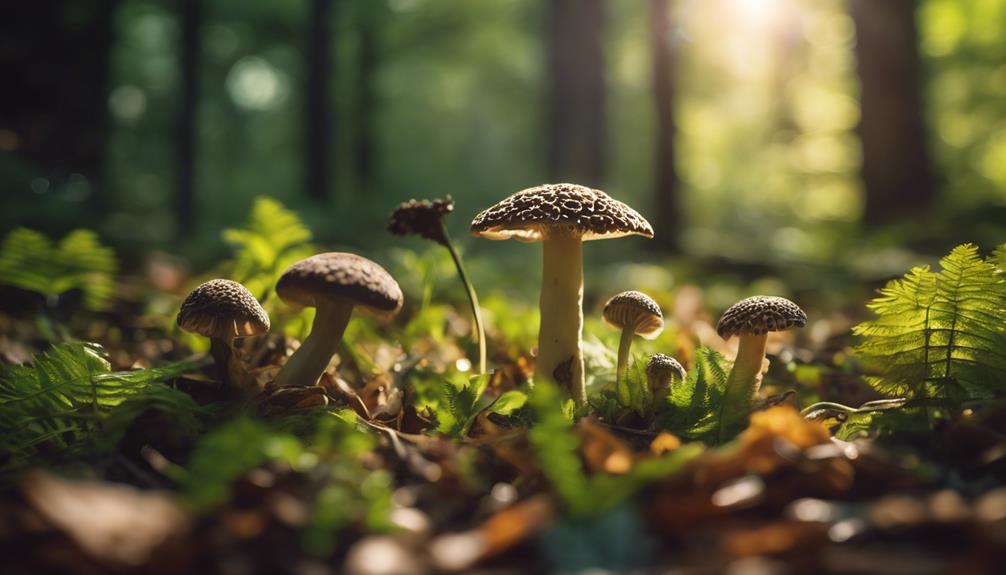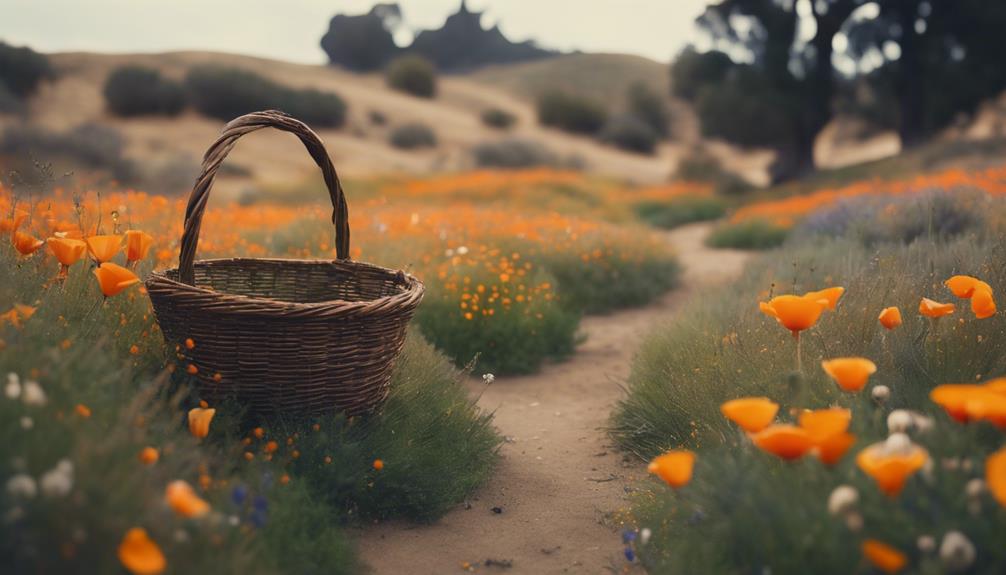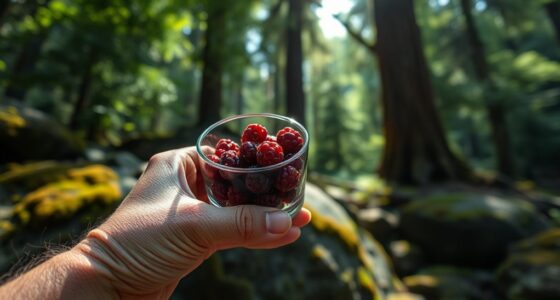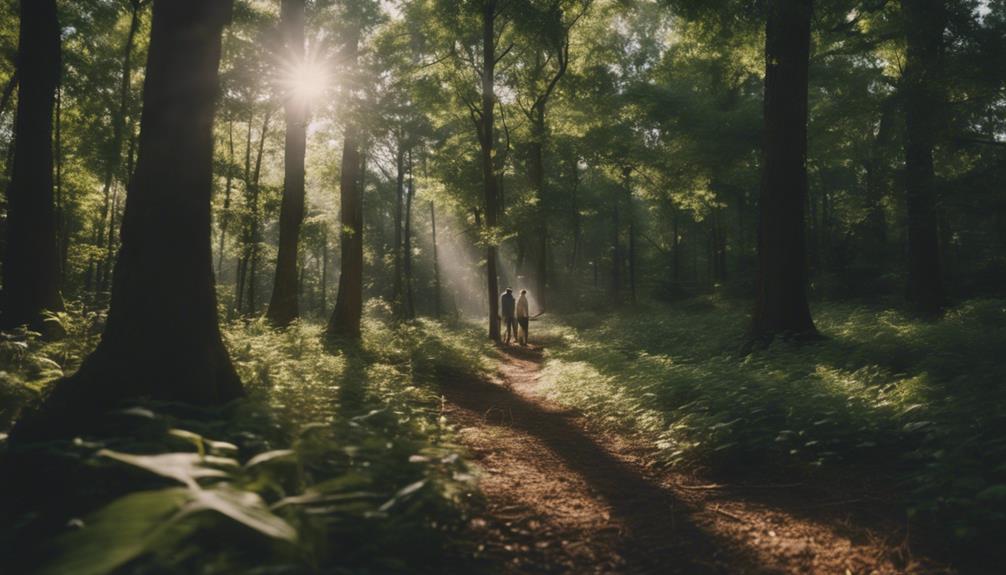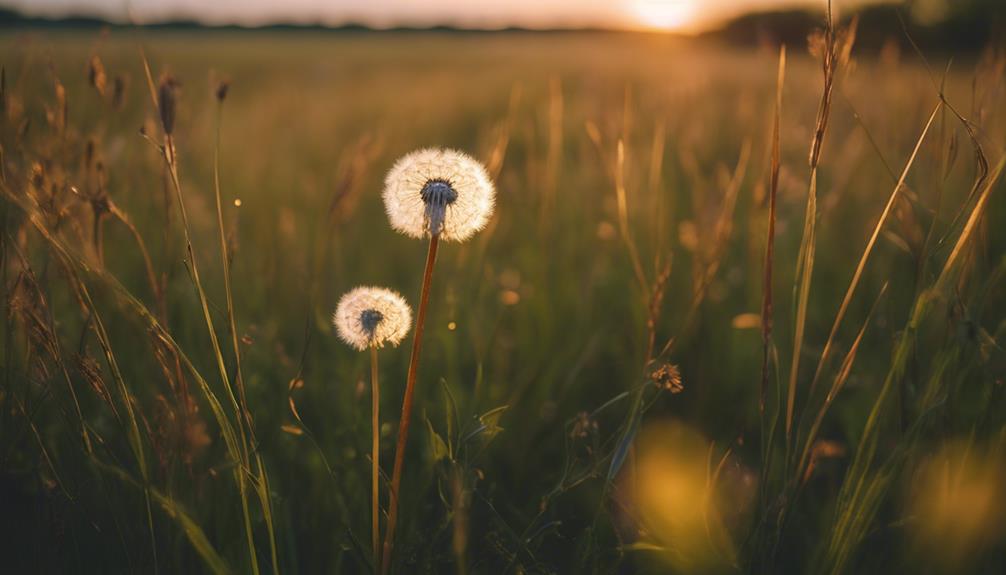You're ready to explore the Arkansas wilderness, where native edible plants await! From flavorful pawpaw and persimmon to wild asparagus and dandelions, the Natural State offers a diverse array of edible delights. But before you start foraging, it's important to learn plant identification, seasonal variations, and sustainable harvesting techniques to guarantee a safe and successful experience. As you venture into the world of Arkansas foraging, you'll uncover the secrets to finding and preparing the tastiest wild edibles, and discover the rich rewards of connecting with nature and nourishing your body.
Key Takeaways
- Properly identify plants before consumption to avoid mistakenly eating toxic species, ensuring a safe foraging experience.
- Understanding plant characteristics, growth patterns, and seasonal variations is crucial for successful foraging in Arkansas' wilderness.
- Sustainable harvesting practices, such as respecting ecosystem limits, ensure the long-term availability of wild edibles.
- Arkansas offers a diverse range of wild edibles, including pawpaw, persimmon, wild asparagus, and over 600 species of blackberries.
- Developing pattern recognition skills, utilizing senses, and staying alert to seasonal changes enhance foraging skills and connect individuals with nature.
Native Edible Plants Overview
As you venture into Arkansas' wilderness, you'll discover a diverse array of native edible plants waiting to be foraged. From the sweet taste of pawpaw to the tangy flavor of persimmon, Arkansas offers a rich tapestry of flora that provides nutrition and a connection to the land.
Foraging in Arkansas is an adventure that requires knowledge of plant species, growth patterns, and harvesting seasons. You'll need to develop your skills in plant identification to make sure a safe and rewarding experience.
Proper identification of plants is essential, as some wild edibles can be easily mistaken for lookalikes that are inedible or even toxic. Take the time to learn about the native edible plants that thrive in Arkansas' climate, and you'll be rewarded with a bounty of fresh, nutritious food.
From berries to roots, Arkansas' wilderness is full of hidden gems waiting to be discovered. By understanding the unique characteristics of each plant, you'll be well on your way to a successful foraging experience in Arkansas.
Foraging Essentials and Safety

Before you head out to forage, make sure you've got the essentials down pat, from identifying plants to harvesting at the right time, to guarantee a safe and successful foraging experience in Arkansas.
To guarantee a safe and enjoyable foraging experience, keep the following essentials in mind:
- Properly identify plants: Don't consume anything you're not 100% sure is safe to eat. Consult reliable sources or experts if you're unsure.
- Know safe identification techniques: Learn about plant growth patterns, harvesting seasons, and how to identify plants without a doubt.
- Practice sustainable harvesting: Avoid over-harvesting and respect the ecosystem to ensure the continued availability of wild edibles.
- Be cautious with toxic plants: Avoid consuming plants like poke salad, and avoid any plant parts that haven't been confirmed as edible.
- Consult experts and reliable sources: Don't rely on guesswork or unverified information – verify plant identities and safety tips with trusted sources.
Seasonal Foraging Guide

Now that you've got the foraging essentials down, it's time to explore the best times to harvest Arkansas' wild edibles, which vary greatly throughout the year. As you investigate into the world of foraging, understanding the seasonal availability of edible plants is essential. You'll find that certain plants thrive during specific seasons, making them easier to find and harvest.
In Arkansas, spring is an ideal time to forage for wild asparagus, dandelions, and violets. Summer brings an abundance of blackberries, mulberries, and persimmons. Meanwhile, autumn is perfect for gathering acorns, sumac, and cattails. By understanding these seasonal variations, you'll enhance your foraging experience and enjoy a more diverse range of edible plants throughout the year.
This seasonal foraging guide will help you navigate Arkansas' rich landscape of wild edibles, ensuring you're always on the lookout for the right plants at the right time. From wild berries in the spring to savory mushrooms in the fall, Arkansas offers a diverse array of natural treasures waiting to be discovered. Much like Oregon foraging adventures, where a wide variety of coastal and forest edibles beckon, Arkansas provides equally thrilling opportunities for both beginners and seasoned foragers. Just remember to always forage responsibly, respecting both the environment and local regulations.
Whether you're a seasoned forager or just starting out, this knowledge will elevate your foraging skills and connect you with the natural world.
Plant Identification and Uses

When venturing into Arkansas' wilderness, you'll want to develop the skills to accurately identify the plants you've learned about in this guide, and understand their various uses in cooking and beyond.
Identifying the edible parts of wild edibles is essential to unleashing their culinary potential.
Here are some examples of wild edibles found in Arkansas, along with their uses:
- Acorns from oak trees can be ground into meal or flour for various culinary uses
- Wild asparagus offers tender stalks ideal for consumption
- Arkansas is home to over 600 species of wild blackberries, perfect for syrups, pies, and cobblers
- Cattails provide edible male flower spikes, pollen, and rhizomes for cooking
- Dandelions offer edible leaves and flowers that can be used in salads or baking
Incorporating Wild Edibles Into Diet

As you've learned to identify and harvest Arkansas' wild edibles, it's time to explore the creative ways to incorporate them into your daily diet. By incorporating wild edibles into your meals, you'll not only add unique flavors but also reap the nutritional benefits of these plants.
Wild edibles in Arkansas offer higher levels of vitamins and minerals compared to cultivated varieties, enhancing the nutritional value of your meals. For instance, dandelion greens and wild strawberries can provide antioxidants and dietary fiber, making them a great addition to salads or smoothies.
Experimenting with foraged ingredients in recipes can lead to delicious dishes and a deeper connection to your local environment. By foraging for wild edibles, you'll promote a diverse and nutrient-rich diet, contributing to overall health and wellness.
Additionally, maintaining a balanced and sustainable diet through foraging ensures responsible consumption and a connection to the land. So, get creative and start incorporating these edible wild plants into your diet to experience the benefits of foraging!
Advanced Foraging Techniques

As you take your foraging skills to the next level, you'll want to focus on observing patterns in the plants you encounter. Mapping out hidden habitats where unique species thrive is another crucial aspect. Decoding the subtle cues that reveal a plant's identity is equally important.
Observing Plant Patterns
By developing a keen eye for growth habits, leaf shapes, and flowering times, you can accurately identify edible wild plants and avoid mistaken identities. Observing plant patterns is an essential advanced foraging technique that sets experienced foragers apart from beginners. By mastering this skill, you'll be able to distinguish between similar-looking species and determine their edibility with confidence.
Here are some key takeaways to keep in mind:
- Growth habits: Note how plants grow, such as upright, sprawling, or twining, to identify patterns.
- Leaf shapes: Observe leaf shapes, sizes, and arrangements to narrow down plant families.
- Flowering times: Recognize when plants bloom and for how long to identify seasonal edibles.
- Seasonal changes: Be aware of changes in plant appearance and behavior throughout the year.
- Confirmation tools: Rely on botanical keys, field guides, and plant identification apps to confirm plant species and safely gather wild edibles.
Mapping Hidden Habitats
You'll uncover Arkansas' best-kept foraging secrets by mapping hidden habitats, where forest edges, stream banks, and specific plant communities converge to create hotspots for elusive wild edibles.
By understanding the relationships between wildlife, plant diversity, and environmental factors, you'll pinpoint hidden foraging spots with ease. To do this, you'll need to develop your observation skills, familiarize yourself with seasonal changes, and learn to identify indicator plants.
These plants, such as blackberries or wild roses, often signal the presence of other edible species. By combining topographical maps, GPS technology, and ecological principles, you'll be able to locate hidden habitats with precision.
For instance, forest edges, where two ecosystems meet, often harbor a diverse range of plant species. By mapping these areas, you'll increase your chances of finding rare and elusive wild edibles.
Decoding Plant Cues
Explore the intricacies of plant language, and you'll decipher the secrets of advanced foraging, where subtle cues in growth patterns, leaf shapes, and flower colors reveal the identities of edible species. As you refine your skills, you'll uncover the hidden patterns of wild plants, leading you to the most prized edible plants in Arkansas.
Here are the keys to decoding plant cues:
- Timing is everything: Understanding plant phenology helps you time your foraging trips to coincide with ideal harvesting stages, ensuring you gather the best of the wild harvest.
- Sensory exploration: Master foragers utilize scent, taste, and texture cues to differentiate between edible and toxic plant varieties, ensuring a safe and sustainable harvest.
- Ecosystem awareness: In-depth knowledge of local ecosystems and plant interactions aids advanced foragers in sustainable harvesting practices, preserving the delicate balance of nature.
- Seasonal adaptations: As the seasons change, so do the characteristics of wild plants, guiding you to specific locations and species during prime harvest times.
- Pattern recognition: By recognizing patterns in growth, shape, and color, you'll reveal the secrets of edible species, expanding your foraging repertoire and deepening your connection with the natural world.
Frequently Asked Questions
How to Find Edible Plants in the Wild?
You'll find edible plants in the wild by studying their characteristics, like leaves and flowers, and consulting field guides or experts to learn what's safe to eat in your region, and then practicing responsible foraging.
What Edible Plants Grow Wild in Arkansas?
As you venture into Arkansas' untamed landscapes, you'll stumble upon hidden gems – acorns, wild asparagus, blackberries, and more – waiting to be discovered, their flavors and textures eager to be released in your next culinary creation.
What Is the Number One Rule of Foraging?
When you're foraging, you must always identify plants correctly before eating them, or you'll risk serious health issues; it's essential you're certain of what you're picking, so don't eat anything unless you're absolutely sure it's safe.
How Do You Forage Wild Edibles?
As you venture into the wild, imagine the forest floor as a treasure trove of edible delights. You forage wild edibles by identifying, timing, and harvesting plants like dandelions and violets, then preparing them with care to savor their flavors and guarantee a sustainable harvest.
Conclusion
You've discovered the treasure chest of Arkansas's edible wild plants! Now, venture forth, and let the forest be your grocery store.
Like a master chef, combine these wild ingredients to craft unforgettable dishes. As you forage, remember, the natural world is your playground, and the secrets of the wild are yours to uncover.
Happy foraging, and bon appétit!

